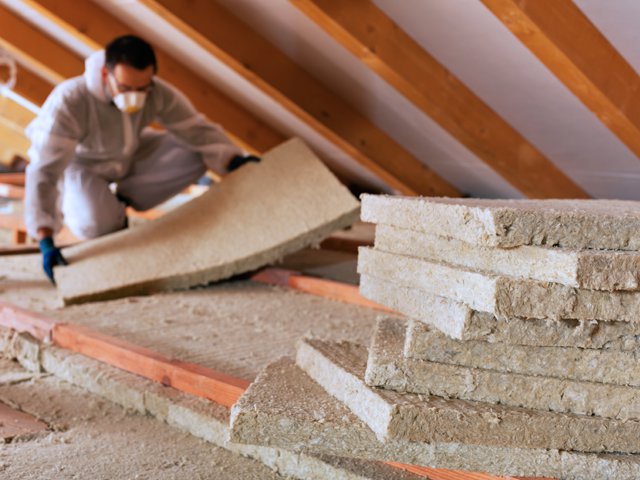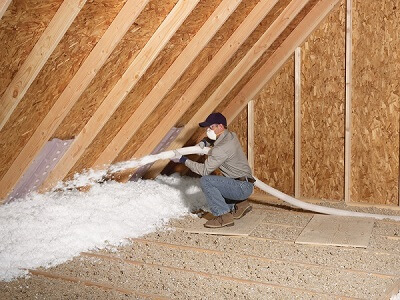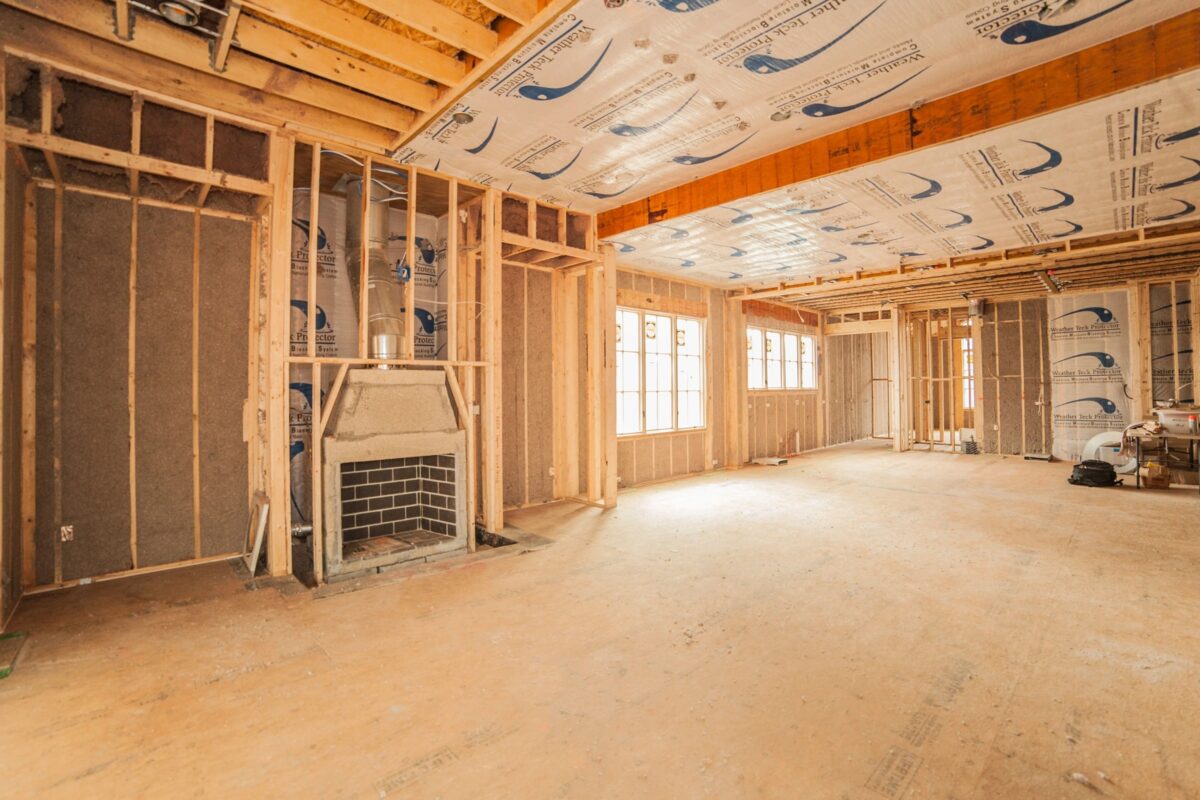Why Attic Insulation is the Key to Year-Round Comfort and Efficiency

Attic insulation plays a crucial role in maintaining a comfortable and energy-efficient home or commercial building. It regulates temperature, prevents heat loss in the winter, and keeps the building cool in the summer. Proper attic insulation can significantly reduce energy consumption, leading to lower heating and cooling costs while improving overall comfort. In this article, we’ll explore the benefits, types, and considerations related to attic insulation and how it contributes to long-term efficiency.
The Benefits of Attic Insulation
Attic insulation is a key factor in achieving year-round comfort and efficiency. Here are the primary benefits:
- Temperature Regulation: Attic insulation helps maintain a consistent indoor temperature by preventing heat from escaping during the winter and keeping hot air outside during the summer. This creates a more comfortable environment throughout the year.
- Energy Savings: By reducing the need for heating and cooling, attic insulation can lead to substantial savings on energy bills. According to the U.S. Department of Energy, proper attic insulation can reduce heating and cooling costs by up to 50%.
- Moisture Control: Insulation can help control moisture levels in the attic, preventing the formation of ice dams, mold growth, and wood rot. This is especially important in areas with extreme weather.
- Soundproofing: Insulation also contributes to soundproofing by reducing noise transmission between floors or from the outside environment. This is beneficial for both residential and commercial properties.
- Environmental Impact: By improving energy efficiency, attic insulation helps reduce the carbon footprint of a building, making it a more eco-friendly option.
Types of Attic Insulation
There are several types of attic insulation materials, each offering different benefits depending on your building’s needs. Here’s a comparison of the most common options:
| Type of Insulation | Description | Best For | R-Value (per inch) |
|---|---|---|---|
| Fiberglass Batt Insulation | Pre-formed panels that fit between studs or joists. | Budget-friendly, easy DIY installation. | 3.1 – 4.3 |
| Blown-In Cellulose | Made from recycled paper products and blown into the attic. | Homes with irregularly shaped spaces. | 3.2 – 3.8 |
| Spray Foam Insulation | Expands upon application to fill gaps and cracks. | Maximum energy efficiency and air sealing. | 6.0 – 7.0 |
| Rigid Foam Board | Lightweight, easy-to-install panels that provide high insulation. | Buildings in areas with extreme temperatures. | 5.0 – 6.5 |
| Cotton (Denim) Insulation | Made from recycled cotton or denim fabric, eco-friendly and sustainable. | Environmentally conscious homes. | 3.5 – 4.0 |
Technical Specifications of Attic Insulation
Each type of attic insulation has different performance characteristics, including thermal resistance (R-value), moisture control, and air sealing. Here’s a breakdown of key specifications:
| Specification | Fiberglass Batt | Blown-In Cellulose | Spray Foam | Rigid Foam Board | Cotton Insulation |
|---|---|---|---|---|---|
| R-Value (per inch) | 3.1 – 4.3 | 3.2 – 3.8 | 6.0 – 7.0 | 5.0 – 6.5 | 3.5 – 4.0 |
| Moisture Resistance | Moderate | High | High | High | Low |
| Soundproofing | Good | Moderate | Excellent | Moderate | Good |
| Ease of Installation | Easy DIY | Requires professional installation | Professional installation required | Easy DIY or professional help | Easy DIY |
| Cost (per square foot) | Low | Moderate | High | Moderate | Moderate |
Things to Consider Before Making a Decision
Before choosing the right type of attic insulation, consider the following factors:
- Climate: The climate in your region plays a major role in selecting the appropriate insulation. For colder climates, higher R-values are necessary, while in warmer areas, less insulation may suffice.
- Budget: Installation costs can vary significantly. Fiberglass and cellulose tend to be more budget-friendly, while spray foam is a higher initial investment but offers superior energy efficiency.
- Installation Method: Some insulation types, such as fiberglass batt and rigid foam board, are relatively easy to install yourself, while others, like spray foam, require professional installation.
- Building Size and Design: If your attic has irregular spaces or difficult access, blown-in cellulose or spray foam might be the best choice, as they can fill gaps and contours better than batt insulation.
- Energy Goals: If you are focused on maximizing energy savings and reducing your carbon footprint, cascadia spray foam insulation is the top choice due to its superior air sealing and high R-value.

Common Questions About Attic Insulation
How much insulation is needed in the attic?
The amount of insulation needed depends on your location and the climate. The U.S. Department of Energy recommends an R-value of 30 to 60 for attics in most regions, but colder areas may require higher values.
Can I install attic insulation myself?
Some types of insulation, such as fiberglass batt or rigid foam boards, can be installed by homeowners with basic DIY skills. However, for spray foam or blown-in cellulose, professional installation is recommended for best results.
How do I know if my attic is properly insulated?
You can check the thickness of the insulation and compare it to the recommended R-values for your area. If your insulation is insufficient, you may notice fluctuating temperatures, higher energy bills, or moisture problems.
What’s the difference between batt and blown-in insulation?
Batt insulation comes in pre-formed panels, ideal for spaces with standard dimensions, while blown-in insulation is loose and can fill irregular gaps and hard-to-reach areas.
Does attic insulation need to be replaced?
Over time, insulation can lose its effectiveness, especially if it gets wet, compressed, or settles. If your attic insulation is old or damaged, it may need to be replaced or topped up.
Bonus Tips for Optimal Attic Insulation
1. Proper Air Sealing
Before adding insulation, make sure to seal any air leaks in the attic. This includes gaps around ducts, vents, and plumbing pipes. Proper air sealing can improve the effectiveness of your insulation and reduce energy loss.
2. Ventilation Matters
Adequate ventilation in the attic is essential to prevent moisture buildup and maintain the integrity of your insulation. Installing soffit and ridge vents can help ensure proper airflow.
3. Insulate the Attic Floor, Not Just the Ceiling
While ceiling insulation is crucial, don’t forget about the attic floor. Insulating the floor can prevent heat from rising into the attic, further improving energy efficiency.

FAQ
What is the R-value, and why is it important for attic insulation?
The R-value measures the insulation’s ability to resist heat flow. A higher R-value means better insulation performance. Choosing the right R-value for your climate ensures energy efficiency and comfort.
How long does attic insulation last?
Attic insulation can last for decades, depending on the material used and how well it’s maintained. Spray foam and rigid foam tend to last the longest.
Is attic insulation fire-resistant?
Many types of attic insulation, including fiberglass and spray foam, have fire-resistant properties. However, it’s important to verify the fire ratings of your chosen material.
Can attic insulation help with noise reduction?
Yes, insulation provides soundproofing benefits by reducing noise transmission between floors and from external sources.
Make the Right Decision
Selecting the right attic insulation is crucial for achieving year-round comfort and energy efficiency. By considering factors like climate, budget, and insulation type, you can make a more informed decision about the best solution for your home or business. Proper attic insulation not only enhances comfort but also reduces energy bills and environmental impact.
Reviewer:
Olivia Thompson has spent 10 years working in spray foam insulation, helping companies grow their visibility. She reviewed this article and provided valuable suggestions on how to better align the content with the needs and expectations of customers, ensuring it resonates with the target audience.










